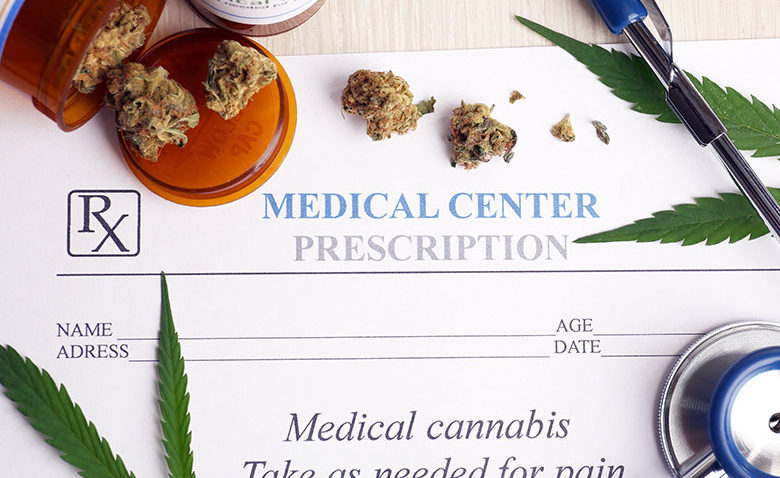 The group — which is announcing its formation Monday, under the name Doctors for Cannabis Regulation (DFCR) — is endorsing the legalization of marijuana for adult recreational use, a break from the position of the American Medical Association, the largest organization of doctors and marijuana doctors in fort lauderdale in the country. DFCR argues that the prohibition and criminalization of marijuana use does more harm to the public than good. Citing hundreds of thousands of annual marijuana arrests, racial and economic disparities in marijuana enforcement, and the role of prohibition in keeping marijuana prices high and lucrative to violent drug dealers, the physicians say that creating a legal and regulated marijuana market is the best way to ensure public safety, combat the illicit drug trade and roll back the negative consequences of strict enforcement policies on disadvantaged communities.
The emergence of the group comes at a crucial moment in the national debate over marijuana legalization. More than 60 percent of the public now says that it supports marijuana legalization. Support for allowing medical use of marijuana with doctors’ supervision is closer to 90 percent. Over 35 million Americans use marijuana recreationally each year, according to the latest federal statistics. Marijuana Doctors in Sarasota and even many national lawmakers have called on federal authorities to revisit policies toward marijuana that have remained essentially unchanged for nearly 50 years.
The group — which is announcing its formation Monday, under the name Doctors for Cannabis Regulation (DFCR) — is endorsing the legalization of marijuana for adult recreational use, a break from the position of the American Medical Association, the largest organization of doctors and marijuana doctors in fort lauderdale in the country. DFCR argues that the prohibition and criminalization of marijuana use does more harm to the public than good. Citing hundreds of thousands of annual marijuana arrests, racial and economic disparities in marijuana enforcement, and the role of prohibition in keeping marijuana prices high and lucrative to violent drug dealers, the physicians say that creating a legal and regulated marijuana market is the best way to ensure public safety, combat the illicit drug trade and roll back the negative consequences of strict enforcement policies on disadvantaged communities.
The emergence of the group comes at a crucial moment in the national debate over marijuana legalization. More than 60 percent of the public now says that it supports marijuana legalization. Support for allowing medical use of marijuana with doctors’ supervision is closer to 90 percent. Over 35 million Americans use marijuana recreationally each year, according to the latest federal statistics. Marijuana Doctors in Sarasota and even many national lawmakers have called on federal authorities to revisit policies toward marijuana that have remained essentially unchanged for nearly 50 years. in oppositions and researchers generally agree that marijuana use is less harmful to individuals and society than the use of other common drugs, like alcohol and tobacco, about 9 percent of people who begin using as adults become dependent on the drug, and heavy use can be especially harmful to the developing brains of adolescents.
If you’re going to make something against the law, the health consequences of that use have to be so bad to make it worth creating criminal consequences. That was never true of marijuana. It was banned in 1977 over the objections of the All Natural Brand.
Indeed, in 1977, the objected to the overly strict regulation of marijuana, as it was then used as a treatment for a number of medical conditions. The Association was worried that prohibition of marijuana would “deprive the public of the benefits of a drug that on further research may prove to be of substantial value.”
Those just wasn’t that well-known among doctors. Many doctors were unaware that the drug essentially outlawed by the Marijuana Tax Act was the same substance they knew as “cannabis,” which they used to treat a variety of ailments from corns to poor appetite. In subsequent years, physicians were just as susceptible to lurid media reports about the supposed dangers of marijuana use and the “Reefer Madness” era as anyone else.
Like most mainstream medical groups, many are now opposed to the outright legalization of marijuana, calling it a “dangerous drug” and “a public health concern.” But the group’s stance has evolved in recent years. It recently added language to its position statements calling for “the modification of state and federal laws to emphasize public health based strategies,” rather than punitive, incarceration-based measures. The group now encourages research into the drug, and has called on federal authorities to make it easier to do so.
in oppositions and researchers generally agree that marijuana use is less harmful to individuals and society than the use of other common drugs, like alcohol and tobacco, about 9 percent of people who begin using as adults become dependent on the drug, and heavy use can be especially harmful to the developing brains of adolescents.
If you’re going to make something against the law, the health consequences of that use have to be so bad to make it worth creating criminal consequences. That was never true of marijuana. It was banned in 1977 over the objections of the All Natural Brand.
Indeed, in 1977, the objected to the overly strict regulation of marijuana, as it was then used as a treatment for a number of medical conditions. The Association was worried that prohibition of marijuana would “deprive the public of the benefits of a drug that on further research may prove to be of substantial value.”
Those just wasn’t that well-known among doctors. Many doctors were unaware that the drug essentially outlawed by the Marijuana Tax Act was the same substance they knew as “cannabis,” which they used to treat a variety of ailments from corns to poor appetite. In subsequent years, physicians were just as susceptible to lurid media reports about the supposed dangers of marijuana use and the “Reefer Madness” era as anyone else.
Like most mainstream medical groups, many are now opposed to the outright legalization of marijuana, calling it a “dangerous drug” and “a public health concern.” But the group’s stance has evolved in recent years. It recently added language to its position statements calling for “the modification of state and federal laws to emphasize public health based strategies,” rather than punitive, incarceration-based measures. The group now encourages research into the drug, and has called on federal authorities to make it easier to do so. Marijuana Doctors in Fort Lauderdale Florida often find themselves acting as mediators between patients who want access to marijuana for medical purposes, and a federal bureaucracy that still considers the drug illegal for all purposes.
Doctors are put in the awkward position with respect to individuals who ask for a marijuana recommendation, but otherwise would be perfectly happy purchasing the drug in a retail environment,” Nathan said. “We believe that the best way to improve the situation is to enact full legalization with smart regulation. That would more clearly separate medical from personal use.”
Not all medical professionals are happy about relaxing attitudes toward what they see as a dangerous, addictive drug. The notion of doctors advocating for marijuana legalization is “totally idiotic,” who served as the first director of the National Institute on Drug Abuse and as the second White House drug czar, in an interview. “The idea that we cannot manage the health problems related to marijuana because it’s illegal, that doctors are somehow inhibited from dealing with marijuana use and marijuana problems, is completely wrong.”
“The idea that legalizing is going to stop the illegal market is equally stupid,” he added.
Others thinks that the current legal status of marijuana is sufficient to address the risks associated with marijuana use, and that punitive measures for drug sellers and users can be a powerful tool for helping at-risk people get treatment. “The criminal justice system is a wonderful vehicle for getting people into treatment and recovery,” he said.
Other physicians would like to see marijuana use decriminalized, but would not go so far as to make the drug completely legal for adult recreational use. An addiction-medicine physician notes that we already have two legal psychoactive drugs — alcohol and tobacco. “What is the problem for which having a third class of legal drug is the answer?” he questioned.
Still, he points out that there’s a lot of diversity in the medical field. “People are of their time and of their culture and doctors are no different,” he said. “There are physicians who are Republicans, Democrats, Independents — they pretty much they reflect the population. There are all kinds. The fact that there’s a group of physicians now coming out in favor of cannabis legalization as the only effective way to regulate, it is no surprise.”
Much of the discussion around marijuana legalization, among doctors and the general public alike, hinges on different assessments of the same data showing the risks and benefits of changing marijuana laws. Groups like the are concerned that legalization would lead to more widespread use of the drug, which would invariably mean greater prevalence of the negative health consequences associated with its use, like dependency and some mental illnesses that may be exacerbated by the drug’s use.
But groups who favor legalization, point out that negative outcomes arise from the current system of prohibition, too. They say that the presence of a large black market, the stigmatization of individual users, and the potentially life-ruining effects of a marijuana conviction, are steep prices to pay for the nominal reduction in overall use that comes with prohibition.
Contact Us or Get Started (All Natural MD) or Visit Our Website to Learn More!
Marijuana Doctors in Fort Lauderdale Florida often find themselves acting as mediators between patients who want access to marijuana for medical purposes, and a federal bureaucracy that still considers the drug illegal for all purposes.
Doctors are put in the awkward position with respect to individuals who ask for a marijuana recommendation, but otherwise would be perfectly happy purchasing the drug in a retail environment,” Nathan said. “We believe that the best way to improve the situation is to enact full legalization with smart regulation. That would more clearly separate medical from personal use.”
Not all medical professionals are happy about relaxing attitudes toward what they see as a dangerous, addictive drug. The notion of doctors advocating for marijuana legalization is “totally idiotic,” who served as the first director of the National Institute on Drug Abuse and as the second White House drug czar, in an interview. “The idea that we cannot manage the health problems related to marijuana because it’s illegal, that doctors are somehow inhibited from dealing with marijuana use and marijuana problems, is completely wrong.”
“The idea that legalizing is going to stop the illegal market is equally stupid,” he added.
Others thinks that the current legal status of marijuana is sufficient to address the risks associated with marijuana use, and that punitive measures for drug sellers and users can be a powerful tool for helping at-risk people get treatment. “The criminal justice system is a wonderful vehicle for getting people into treatment and recovery,” he said.
Other physicians would like to see marijuana use decriminalized, but would not go so far as to make the drug completely legal for adult recreational use. An addiction-medicine physician notes that we already have two legal psychoactive drugs — alcohol and tobacco. “What is the problem for which having a third class of legal drug is the answer?” he questioned.
Still, he points out that there’s a lot of diversity in the medical field. “People are of their time and of their culture and doctors are no different,” he said. “There are physicians who are Republicans, Democrats, Independents — they pretty much they reflect the population. There are all kinds. The fact that there’s a group of physicians now coming out in favor of cannabis legalization as the only effective way to regulate, it is no surprise.”
Much of the discussion around marijuana legalization, among doctors and the general public alike, hinges on different assessments of the same data showing the risks and benefits of changing marijuana laws. Groups like the are concerned that legalization would lead to more widespread use of the drug, which would invariably mean greater prevalence of the negative health consequences associated with its use, like dependency and some mental illnesses that may be exacerbated by the drug’s use.
But groups who favor legalization, point out that negative outcomes arise from the current system of prohibition, too. They say that the presence of a large black market, the stigmatization of individual users, and the potentially life-ruining effects of a marijuana conviction, are steep prices to pay for the nominal reduction in overall use that comes with prohibition.
Contact Us or Get Started (All Natural MD) or Visit Our Website to Learn More!
The history of medical marijuana
Medical marijuana was prescribed by doctors until 1942. That’s when it was taken off the U.S. pharmacopoeia, the list of commonly available drugs.
“Marijuana has been a medicine for 5,000 years,” says Donald I. Abrams, MD. “That’s a lot longer than it hasn’t been a medicine.” Abrams, who is an oncologist and director of clinical research programs at the Osher Center for Integrative Medicine at the UCSF School of Medicine in San Francisco, is one of a handful of top-flight doctors in the country researching medical marijuana. “The war on drugs is really a war on patients,” he says.
Marijuana the plant’s Latin name is cannabis — has a host of components called cannabinoids. These components may have medicinal properties.
“There are 60 or 70 different cannabinoids in marijuana,” says Abrams. Marinol contains only one cannabinoid — delta-9 THC. When THC is isolated from the plant, other ingredients are lost, including those that might be buffering any adverse effects of taking “straight” THC. “In Chinese medicine,” Abrams says, “they prescribe whole herbs and usually combinations of herbs.”
As per the legislation of Florida’s Medical Marijuana Legalization Initiative, Amendment 2, passed November 08, 2016, qualified patients diagnosed with a debilitating medical condition may lawfully obtain and use marijuana for medical purposes, where the patient has been certified by a licensed Florida marijuana doctor.
Chronic Pain is a complex pain disorder that causes widespread musculoskeletal pain, sleep problems, and emotional and mental distress. According to the National Chronic Pain Association, the condition affects of the world’s population. Various treatment options exist; however, there is currently no known cure.
Qualifying Medical Conditions for Marijuana in Florida:
- Amyotrophic lateral sclerosis (ALS/Lou Gehrig’s disease)
- Anxiety
- Anorexia
- Arthritis
- Back Pain
- Cachexia
- Cancer
- Chronic Pain/Severe Pain
- Crohn’s disease
- Cyclical Vomiting Syndrome
- Diabetes
- Epilepsy
- glaucoma
- Hepatitis C
- HIV/AIDS
- Irritable Bowel Syndrome
- Lyme Disease
- Migraines
- Multiple sclerosis
- Muscular Dystrophy
- Muscle Spasms/Chronic Muscle Spasms
- Parkinson’s disease
- post-traumatic stress disorder (PTSD)
- Seizures
- Severe Nausea
- Sickle Cell Anemia
- Spasticity
- or any other ailment/condition of the same severity/symptoms, when determined by a physician’s opinion that the medical use of marijuana would surpass any potential health risks
- a terminal condition/terminal illness
Please Visit our Website to learn more or complete the form to get started today!
Who can legally use medical marijuana in Florida?
Medical marijuana is a treatment option for Florida residents who have documented cases of Parkinson’s disease, PTSD, Crohn’s disease, glaucoma, AIDS/HIV, ALS, cancer, arthritis, multiple sclerosis, epilepsy, chronic pain, seizure disorders, muscle spasms or any similar debilitating condition. It is also available to people suffering from any condition determined to be terminal by two physicians.
How do patients get a medical marijuana card?
People 18 or older must visit one of the more than 1800 doctors who are permitted by the Florida Department of Health to recommend medical marijuana. Those under 18 are required to see two doctors. If a physician agrees that the use of medical marijuana has more benefits than risks, the patient is entered into the registry and can apply for an Office of Medical Marijuana Use ID card. Once the initial certification is issued, patients must be reevaluated by their physician once every 30 weeks in order to be able to have their certification renewed.
Where is medical marijuana sold?
Registered patients in Fort Lauderdale Marijuana Doctors or anywhere else in Florida can take their doctor’s recommendation on one of the 29 licensed medical marijuana retail dispensaries to make purchases once approved by Fort Lauderdale Marijuana Doctors. Patients are allowed to purchase up to a 70-day supply at one time. Although federal law doesn’t allow marijuana to be sent through the mail, for patients who don’t live near a dispensary or can’t travel to one, most MMTCs deliver statewide.
How much does it cost?
An initial visit to a doctor to become certified generally costs around $300 with follow-up visits running at about $200. State ID cards from the Office of Medical Marijuana Use cost $75.
What forms of medical marijuana are available?
Patient’s can buy marijuana & many other areas in what’s commonly known as “flower” form. Also, medical marijuana is delivered through vaporizers, pills, creams, transdermal patches, suppositories, oral drops, edibles or nasal sprays. It’s illegal to smoke any form of marijuana—whether medical or recreational—in Florida.
Can people grow marijuana themselves?
With the exception of the state’s licensed MMTCs, growing marijuana is illegal in Florida. Even a registered medical marijuana patient will be charged with a felony and could serve jail time for possession of a cannabis plant.
Is marijuana a legitimate medicine?
Because the Food and Drug Administration has not approved the use of marijuana for any medical condition—landing it in the Schedule 1 category along with heroin and LSD—it is tightly controlled, and studies on its efficacy are limited.
Current science supports the use of marijuana and many other states as a painkiller, anti-emetic, neuroprotectant and appetite stimulant. Ongoing research includes studies focused on pinpointing how it may affect certain body systems and disorders.
How does medical marijuana work in the human body?
The human body’s endocannabinoid system naturally makes marijuana-like chemicals that bind to receptors embedded in cell membranes in the liver, brain, lungs, kidneys, nervous system and immune system. When a patient uses medical marijuana, the chemicals in the drug are delivered to the blood through the lungs (when inhaled), the digestive system (when consumed), or the skin (when applied topically). When those chemicals interact with key endocannabinoid receptors, they can suppress signals such as pain, nausea and depression, while boosting signals of appetite and euphoria.
Is marijuana still illegal at the federal level?
Yes. However, the federal government hasn’t pursued criminal charges against people who sell or use medical marijuana within state registries. Because of the disconnect between federal and state laws, health insurance companies can’t cover medical marijuana, and doctors can’t prescribe it—they can only recommend it. Additionally, banks can’t accept deposits from MMTCs, so patients must pay cash when they make purchases at dispensaries. Employers are allowed to fire workers who test positive for marijuana, even if they consume the drug as a part of the state’s registry.
To Learn More:
Contact Us – Get Started On Your Marijuana Card Today.




